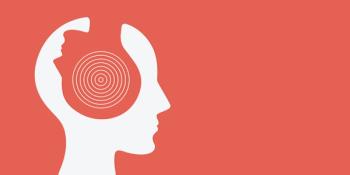
Killer App for Insomnia Therapy
Here’s the major ingredient in a new psychotherapy for bipolar disorder.
RESEARCH UPDATE
While this article might look like it’s about insomnia, it’s the first in a 3-part series about treating bipolar disorder with as few medications as possible. Cognitive behavioral therapy for insomnia (CBT-I) is a major ingredient in a new psychotherapy for bipolar disorder; indeed, the latter is called CBT-IB, a bipolar-specific variant of CBT-I.
To be prepared to offer CBT-IB, you’ll need to be familiar with plain CBT-I, where the good news is (as shown herein), a remarkable free app can help you provide research-grade therapy with little additional reading or practice. Once you’re familiar with CBT-I, look for the
Surely you feel the pressure to reduce the use of benzodiazepines for sleep, because of their linkage with opiates and mortality risk.1,2 Sedative/hypnotics (“z-drugs” such as zolpidem and its cousins) also are associated with an increased risk of falls3 and other hazards.4
But simply offering patients a list of “sleep hygiene” recommendations is not likely to meet the needs of many patients. Some of them will view it with scorn, thinking it shows you really don’t understand the severity of their insomnia.
Fortunately, a new smartphone app helps you offer much more than just sleep hygiene. With relatively minimal reading and practice, you can offer a comprehensive psychotherapy for insomnia: CBT-I.
The first ingredient in CBT-I’s 3-component is still sleep hygiene, so have a good list, like the one from
Two more ingredients make a therapy
Now add typical CBT: cognitive techniques include eliciting the typical thoughts your patient will have while lying awake (“I will feel terrible tomorrow,” “If I don’t sleep, I can’t work,” etc), then exploring alternative thoughts and experiments to test them. Behavioral techniques include breathing training, simple meditations (eg, this
The final ingredient in CBT-I is the most challenging for both patient and therapist: sleep restriction therapy. It relies on the second drive to sleep, in addition to circadian rhythm: progressive sleep deficit (aka, homeostatic drive). Simply put: the longer one goes without sleep, the greater the pressure to do so, although genetic and environmental factors are also involved (here’s a
In sleep restriction therapy, patients with insomnia are invited to estimate the amount of sleep they’re actually getting. They are then allowed to spend only that amount of time in bed (with no naps). When the resulting additional sleep deficit improves their sleep efficiency (time asleep relative to time in bed) to 90% or more, they are then allowed to add additional time in bed, as long as their improved sleep efficiency is maintained.
Now that’s got teeth, doesn’t it? Unless CBT-I was more effective than pills, who would want to go through that?
But indeed CBT-I is more effective than pills: in
Even motivated patients will struggle with the math, though (and perhaps their therapists will as well!). Repeatedly calculating sleep efficiency is tedious at best.
Enter the killer app: CBT-I Coach. The built-in sleep diary, complete with electronic reminders to fill it out, calculates sleep efficiency automatically. The app then instructs patients on how to ease their restrictions as efficiency improves.
The app also offers all the other ingredients: psychoeducation, sleep hygiene, relaxation skills, even things to do while staying up! The CBT-I Coach app was developed to support, not replace, a good psychotherapist. Here’s a
But does it really work? Dr Holly O’Reilly, head of the armed services’ Deployment Psychology program, encourages its use by clinicians, calling it a “
Once you’ve got this technique in hand, you’ll be ready for CBT-IB, a bipolar-specific psychotherapy that combines CBT-I with elements of social rhythm therapy, light and dark management, and motivational interviewing. (
Disclosures:
Dr Phelps is Director of the Mood Disorders Program at Samaritan Mental Health in Corvallis, Ore. He is the Bipolar Disorder Section Editor for Psychiatric Times. Dr Phelps stopped accepting honoraria from pharmaceutical companies in 2008 but receives honoraria from McGraw-Hill and W.W. Norton & Co. for his books on bipolar disorders.
References:
1. Jann M, Kennedy WK, Lopez G.
2. Park TW, Saitz R, Ganoczy D, et al.
3. Tom SE, Wickwire EM, Park Y, Albrecht JS.
4. Chung S, Lin C, Wang L, et al.
5. Mitchell MD, Gehrman P, Perlis M, Umscheid CA.
Newsletter
Receive trusted psychiatric news, expert analysis, and clinical insights — subscribe today to support your practice and your patients.













